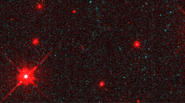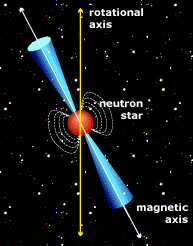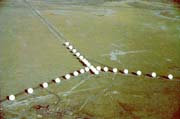Air and Space Watch What is it like… To be an Astronomer?
This email was received through Ask the Experts here on the SEED Science Center Web site:
 Dear SEED,
Dear SEED,
I am a high school student working on a research project in Earth Science. I wonder if you could assist me in finding an astronomer to interview and learn more about this job field.
Thank you very much,
Jamie
We put Jamie in touch with SEED Expert José Navarro. Here is their exchange:
 Michael Tempel from SEED has contacted me regarding your research project. I was a professional astronomer (working mostly on pulsar radioastronomy) before I joined Schlumberger three years ago. I would be happy to assist you with the interview. Just let me know what to do.
Michael Tempel from SEED has contacted me regarding your research project. I was a professional astronomer (working mostly on pulsar radioastronomy) before I joined Schlumberger three years ago. I would be happy to assist you with the interview. Just let me know what to do.
Cheers,José Navarro
José,
Thank you for contacting me. I have chosen to research a career, specifically what it is to be an ‘astronomer’. I will write again in a few days when I have a couple questions organized. But for now, what is pulsar radioastronomy?
Again, thank you very much,
Jamie Jamie,
Radioastronomy is the part of astronomy that uses radiotelescopes to look at the sky instead of normal optical telescopes. This means that radioastronomers don't observe light from the stars, but see instead the radio waves that they produce. Thus the bright objects in radioastronomy are those that produce the most radio waves and not the ones that produce the most light. These objects are called pulsars.
Because pulsars emit much more energy in the form of radio waves than in visible light, they are normally studied with radiotelescopes. In fact, only a handful of the perhaps 1000 known radio pulsars are visible with optical telescopes.
Pulsars are a special type of star that has undergone some sort of stellar collapse (most likely during a supernova event) and have become incredibly small and dense, as well as fantastically magnetized and rapidly spinning. In the SEED web page you can find out more about pulsars, but please do ask if you'd like clarifications or just want to know more.
I look forward to hearing from you soon.

Cheers,José
Hi José!
Thanks for describing radio-astronomy! I think I understand the radio wave part of it, but the pulsar half is a little confusing. Is this kinda what is going on???
The star dies, explodes, dissapears, but leaves behind radio waves so that scientists can "track" it and learn more about the way our universe works?
Jamie Jamie,
Pulsars were discovered by accident, with a radiotelescope. What we know from direct observation is that they emit lots of radio energy in a tightly focused beam, and that the pulses that we observe are the moments during which the beam points in our direction. Think of them as lighthouses. In fact, they emit all kinds of energy in addition to radio waves, including light in this beam, but they are generally too faint to be seen with an optical telescope.
The beam comes from the fact that pulsars have very strong magnetic fields (larger than we can create in the lab) and that they rotate very fast (some pulsars rotate so fast that the surface at the equator moves at one tenth of the speed of light). The combined effect is that of a dynamo, where the voltage created at the magnetic poles is so large that it produces all kinds of particles and emissions (hence the light and radio waves). Hence the beam.
Let me know if you need more details about any of this, or if you have other questions.
Cheers,José
Hi José!
What is a good visual aide I can use during my project presentation?
Thanks,Jamie
Hi Jamie,
I would expect you to show some astronomical pictures: a radiotelescope, some optical images of pulsar neighborhoods, things like that. If you are going to talk about pulsars, then you can also play an audio tape of three pulsars that is quite startling, which you can find.

José Very Large Array José,
Hi! How are you? I have my project finished, I'm just waiting for my teacher to let me know when I'm supposed to present it.
I started with Karl Jansky and Grote Reber, giving a little bit of history as well as including some pictures of their telescopes that I downloaded off the internet. Then I described the telescopes (with a picture) and the graphs/charts. After that I included a slide on the VLA-Goldstone system. (What does VLA stand for?) Then a bit about what radioastronomy is and when it began to develop.
Thanks,
Jamie
Jamie,
Congrats! It must feel good to be done, with only the final presentation left. What you have prepared sounds good. I hope you are ready and that it all goes well.
VLA stands for Very Large Array. They have a web site at www.vla.nrao.edu/ if you are interested one day. It's where I worked for two years before going into oil exploration with Schlumberger. They and other observatories like Arecibo (www.naic.edu) have summer internships for seniors in high school.
Cheers and good luck,
José
If you would like to find out more about a career in science or engineering, you can interview a SEED Expert. Tell us what field you are interested in and we’ll put you in touch with the right person. Or look at the profiles of SEED People and tell us who you’d like to interview.
This content has been re-published with permission from SEED. Copyright © 2025 Schlumberger Excellence in Education Development (SEED), Inc.

